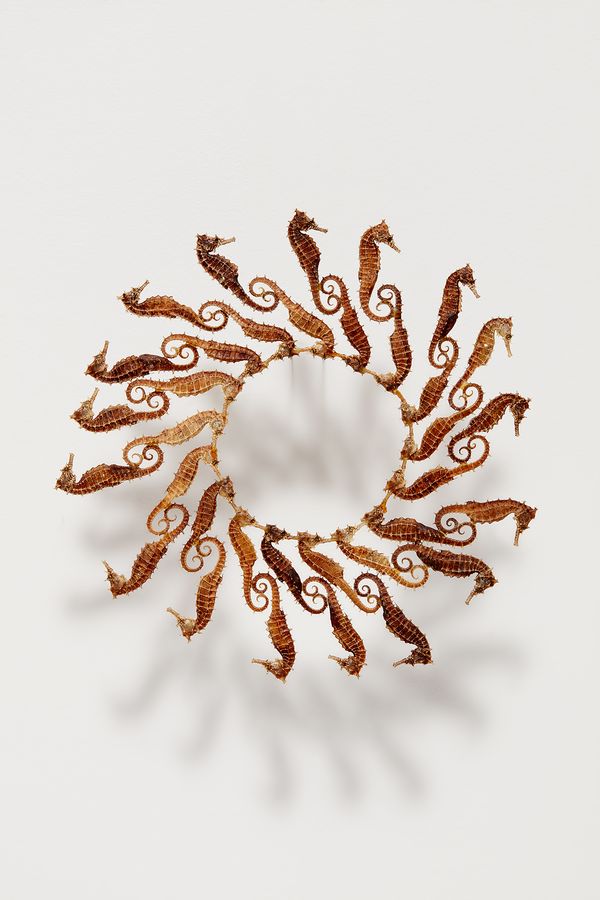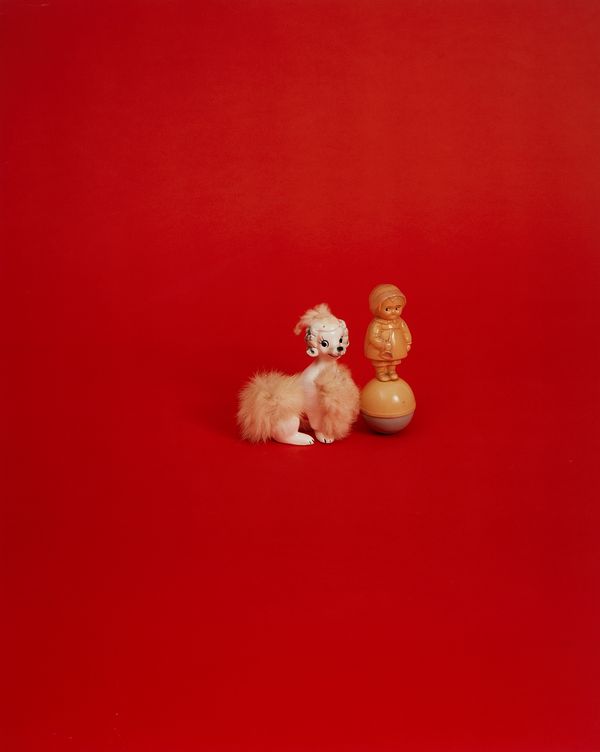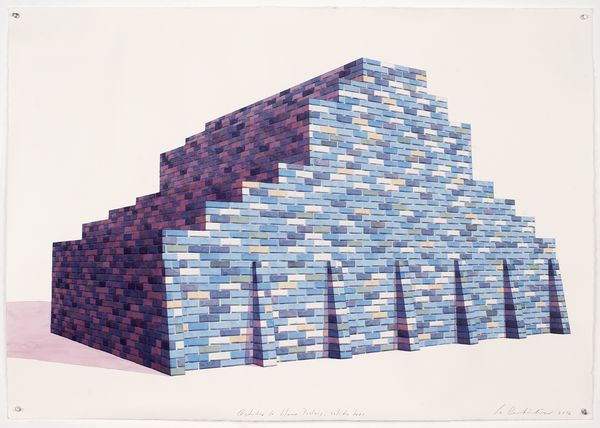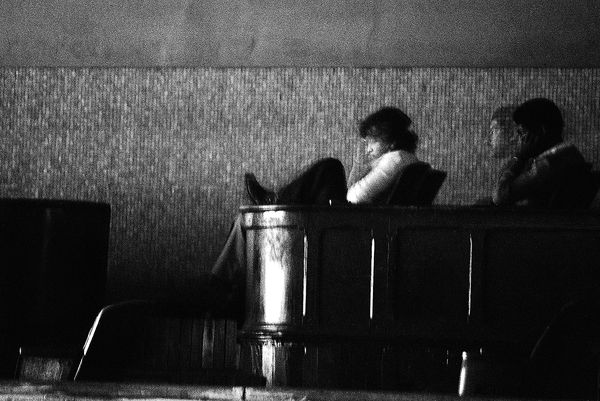Los Carpinteros Estudio de Hans Poelzig, sólido tres, 2016. Watercolor on paper © Los Carpinteros. Courtesy: Sean Kelly, New York
FLORA ars+natura is a non-profit foundation in Bogotá, Colombia that deals with the myriad relationships between art and nature. FLORA's programs have had important implications for both artistic and non-artistic circles; its team works closely with local communities, considering social, environmental and political issues through contemporary art projects.
Founded in 2012 as a meeting place for artists and those interested in contemporary art, the organization is run by José Roca, former TATE Estrellita B. Brodsky Adjunct Curator of Latin American Art and co-curator of the 27th Bienal de São Paulo, Brazil (2006), with his wife Adriana Hurtado, cultural administrator. Located in a former residential house in the working-class neighborhood of San Felipe — which has since become one of Bogotá’s most vibrant cultural districts — FLORA is a space with an open character and a domestic scale, with a high level of quality. In just five years it has become a point of reference for the local scene in Bogotá, establishing links with the rest of the country and abroad through international residencies, commissioned projects and intense educational activity. All of FLORA's programs are free for the participants and the public.
Since 2016, FLORA has focused on supporting emerging artists through long-term residencies in a brand-new building contiguous to the original house, with a total of 20 studios. While each studio is generously sponsored by a specific benefactor, whether an institution or individual, the project requires additional funding.
As part of Phillips' Latin America sale this May in New York, a selection of lots will be sold to benefit FLORA ars+natura, including works by Los Carpinteros, Pedro Reyes and Maria Fernanda Cardoso, among others. This initiative is being supported by Portafolia Studio, a London-based digital marketing and collaborations studio that specializes in the art market. We invite you to explore some of the highlights from this collection and save the date for our upcoming exhibition and auction in New York.

Maria Fernanda Cardoso Seahorse Circle, 2003
From her first works, Colombian artist María Fernanda Cardoso uses geometry to organize the materials with which she composes her sculptural objects, re-codifying Modernist formal strategies with symbolically charged materials.
She uses stuffed animals and plastic flowers, which refer respectively to pre-Columbian myths and funerary rites, or natural elements like bones, gourds and panelas ("bricks" of unrefined sugar), all of them with strong links with local traditions in her native Colombia. But in these works the element or "material" maintained its own character, with geometry appearing invariably as an ordering principle. For instance, in her works with seahorses, frogs, snakes, grasshoppers, flies and lizards, the animals are subjected to precise geometric dispositions in circles, spheres or ellipses, resulting in sculptures that refer to Modernist formalism but that are charged with diverse associations when a close-up gaze reveals to the viewer the nature of the materials that compose them.
In the majority of these works, the repetition of similar elements of idiosyncratic forms creates a structural effect by association. In the series of works with butterflies and seahorses, the intrinsic geometry of the elements is brought forward, becoming an integral part of the overall composition. Cardoso uses the formal characteristics of each element to effect an operation of synthesis, where each element loses its independence in favor of a broader image of great complexity and formal richness.

Liliana Porter Red with Them, 2005
As artist Liliana Porter explained her Toy Ornaments to EXIT Magazine in 2007, "The objects I use in my work to create what I call 'situations' shape a varied ensemble that at first seems to consist entirely of toys, but that actually includes objects such as salt shakers, lamps, perfume vials, clocks, candles, pin cushions, nutcrackers, ashtrays, saucers, pencil holders, flower vases, bottle openers and other such useful items. They all seem like toys because those I choose are always, or almost always, in the form of figurines or little animals.
"In this varied array there are also objects that do not fit into the category of useful things or toys. They are what we call 'adornments', which has always been somewhat intriguing and even mysterious to me...As in the animist relationship a child establishes with his toys, the works that emerge through the use of these objects require that the viewer allow himself to establish an open relationship with these characters...All these considerations lead me to question and want to define the other aspect I do not entirely understand either, the concept of the real."

Los Carpinteros (Marco Castillo and Dagoberto Rodríguez) Estudio de Hans Poelzig, sólido tres, 2016
Helen Molesworth, scholar and curator for the Museum of Contemporary Art, Los Angeles, contributed to Back to the future: Los Carpinteros' watercolors in 2010, describing the dynamic role that drawing has played in the history of art, 'regarded both foundational and peripheral, central and marginal.' She explains that the drawings by Los Carpinteros (The Carpenters) — a Cuban artist collective formed in 1992 — are clearly "more than a sketch, more than an idea-as-yet uncompleted."
"Certainly they present themselves as what Yve-Alain Bois would call 'projective drawing', meaning that they are a drawing of something that is 'discovered' through the process of drawing. This is why they can be described as being 'close' to illustration...It would be easy, even romantic, at this juncture to claim these drawings as utopian. There is a part of me that would like to situate them in the Soviet
tradition of Vladimir Tatlin's monument or Lyubov Popova's clothing designs, or to see them as mining the architectural archives of El Lissitzky or Le Corbusier.
"And yet somehow I can't quite make the leap, as pleasurable and as art historically pat as such an argument may be. This is largely because I think that Los Carpinteros' drawings don't exist purely in relation to the temporality of an idealized futurity that signifies the utopian. Quite the contrary, I think that the drawings, for all their seeming simplicity, frequently instantiate disparate and condensed versions of time."

Miguel Ángel Rojas Proa en la nave de la ilusión (from the Faenza series), 1979-2010 (detail)
Miguel Ángel Rojas is one of the first Colombian artists to deal with class, race and sexual orientation by depicting his own life experiences in his work. Rojas began his career in the 1970s, creating strikingly homoerotic, large-scale drawings of body
parts rendered in a hyperrealistic manner. At that time, Colombian society was still quite conservative and intolerant, and thus Rojas' early works are at once a document, a declaration of personal principles and his way of taking a stand against the status quo.
These works were made at a time when photorealism was particularly relevant in Colombia, but Rojas spurned objectivity, instead employing his own interests and worldview as a means of expression. Although his drawings and prints refer to action films and Westerns — indeed, cinema was a major influence in Rojas' formative years — his subject matter is the male body as an object of desire.
Photographs taken at the Faenza Theater launched a series that Rojas continuously references in the rest of his work; indeed, they constitute a source of imagery he has addressed and reworked time and time again. The Faenza, Mogador and Imperio were movie theaters built in the early twentieth century that gradually fell into decay as their surrounding neighborhoods became dilapidated and other parts of the city became more affluent. Many of these theaters, which played continuous runs of action films, were also gay cruising spots. In keeping with his subject's covert nature, Rojas furtively documented the goings-on in these places, taking photographs with the movie screen as the only source of light. It is significant that the erotic encounters Rojas captured took place against a backdrop of violence: a mingling of sex drive and death drive.
"FLORA is honored to partner with Phillips on this important auction, which will bring international attention to our organization and raise funds to help us continue our mission of offering residencies, exhibitions and educational programs—particularly those that support emerging artists. We admire Phillips' expertise and dedication to promoting contemporary Latin American art, and are very grateful to the talented artists who have graciously donated works to this auction. Their generosity will help provide wonderful opportunities for countless others." — José Roca
Click here to preview more works from our upcoming Latin America sale.
Latin America
Auction 24 May 2017 2pm EDT
Public Viewing
450 Park Avenue, New York (map)
20 - 24 May
Saturday - Wednesday 10am-6pm EDT
